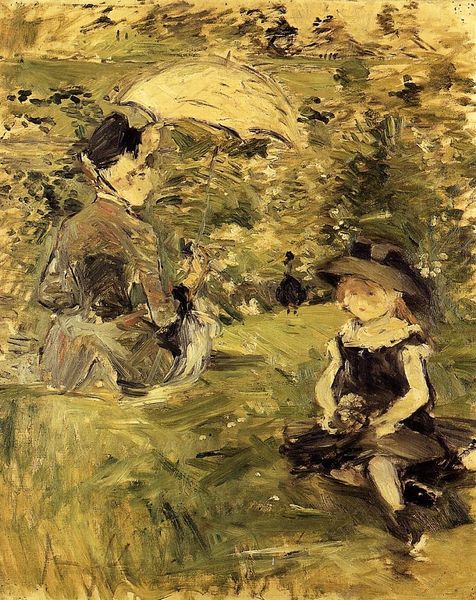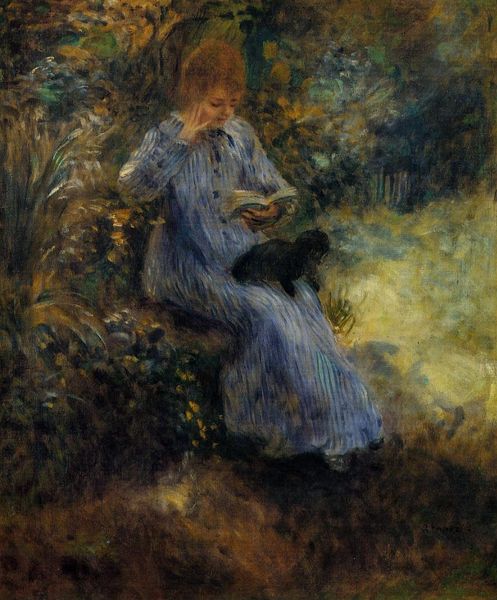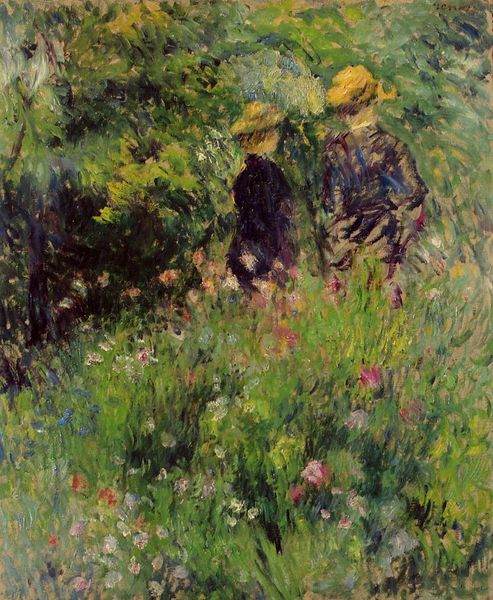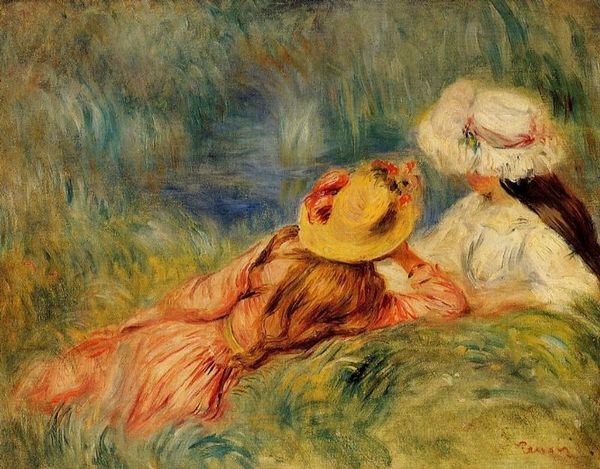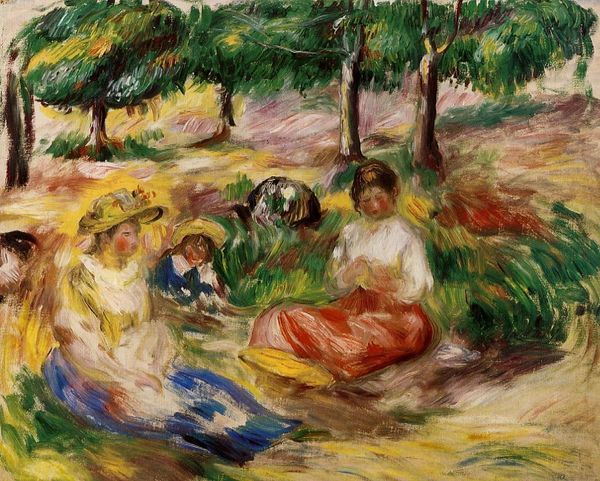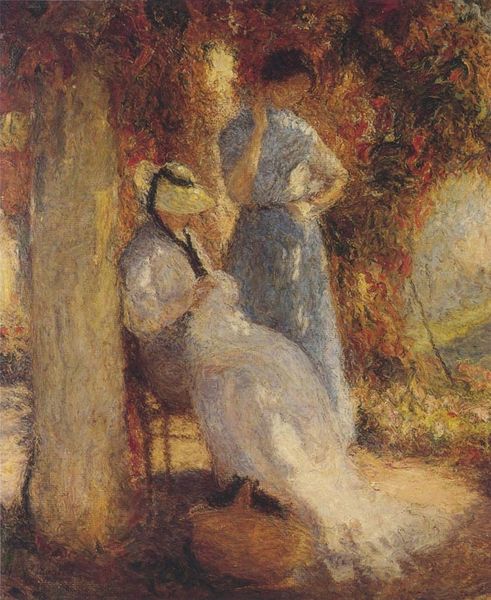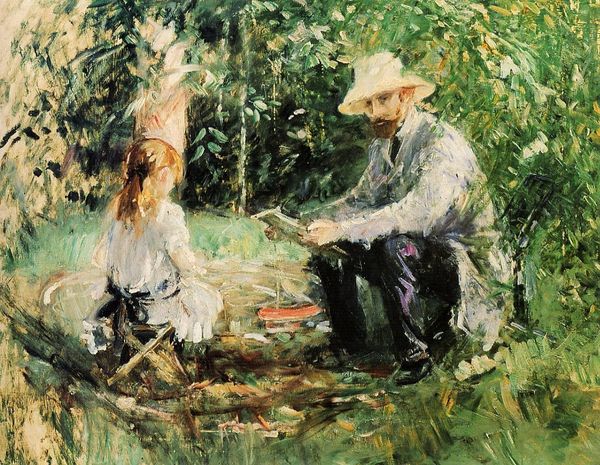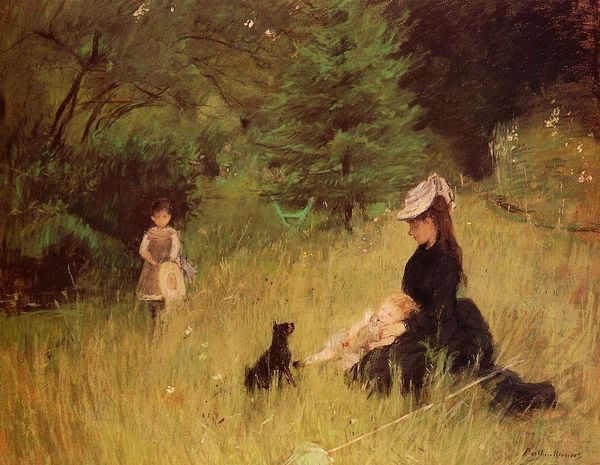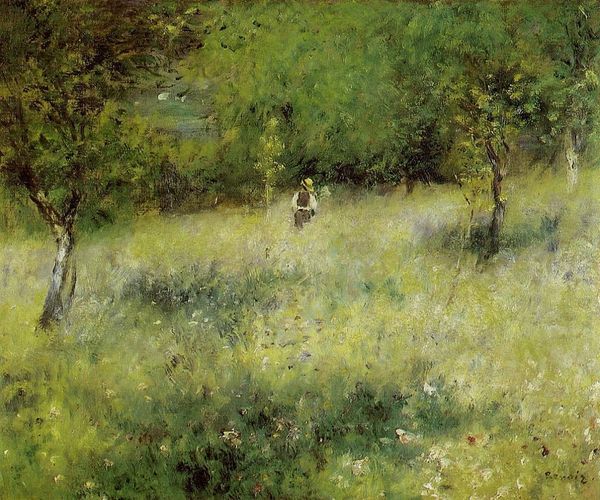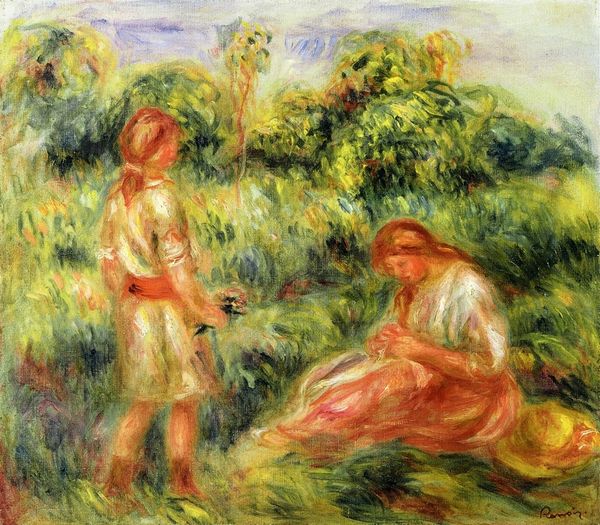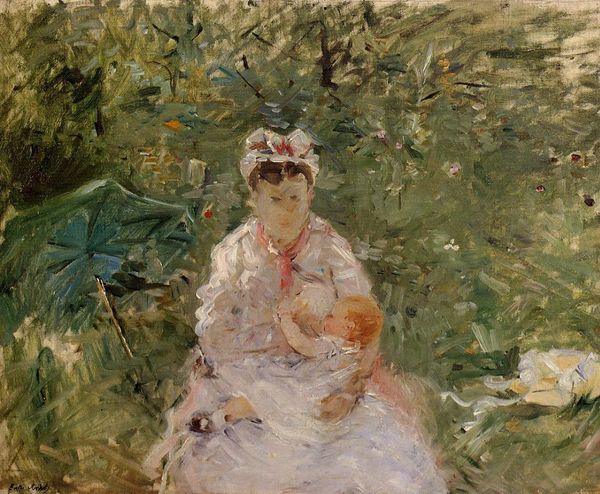
painting, plein-air, oil-paint
#
portrait
#
tree
#
garden
#
painting
#
impressionism
#
plein-air
#
oil-paint
#
landscape
#
impressionist landscape
#
oil painting
#
france
#
genre-painting
Dimensions: 59.6 x 73 cm
Copyright: Public domain
Curator: This is Berthe Morisot’s “Julie with Pasie in the Garden at Bougival,” created in 1881. Editor: The immediacy of it is striking. It feels as if we’ve just stumbled upon a private moment in a sun-drenched garden, all dappled light and soft focus. Curator: Precisely. Morisot, working en plein air, captures a fleeting interaction between her daughter Julie and, we assume, her nursemaid Pasie. What resonates deeply is Morisot's perspective as a woman artist during a period of significant societal constraint, compounded by her subject matter of women's everyday domestic lives which often got critiqued by male contemporaries. Editor: And how do you think this tension finds a visual language here, or anywhere else in her work? For example, I immediately connect this scene with images of "Mother Earth," a protective deity figure surrounded by life. The nursemaid is obscured in shade, her expression lost, whereas Julie emerges in light, clutching a small blossom. There is a Madonna and Child narrative that emerges out of an exploration of colour and familial relationship. Curator: Absolutely, and it speaks volumes about the construction of female identity within Impressionism. Pasie remains somewhat anonymized, serving in a supporting role, while Julie embodies a hopeful future for women within an evolving domestic space, albeit it a constructed one. Consider also the compositional choice, to leave space for women, and allow for Julie’s exploration within the space as opposed to confining women. Editor: You're right, the figures aren't dominating the space. It’s their immersion into it, a sense of harmony with nature. There is no forced iconography here, but instead what we receive is a sense of quiet beauty and interconnectedness. And the way Morisot uses those hazy whites and greens…they're the colors of serenity and potential. Curator: Indeed. The fluidity with which she navigates those colours, capturing nuances and subtle social narratives, makes it not only beautiful but intellectually engaging, as Morisot prompts an exploration into the intersection of womanhood, representation, and liberation in 19th-century France. Editor: For me, this reminds me of that the power of visual language to create these silent mythologies that carry deep emotional truth and memory through the ages. Curator: A complex image indeed, and an invitation to view Impressionism through a more complex sociopolitical lens.
Comments
No comments
Be the first to comment and join the conversation on the ultimate creative platform.
